How to caulk a bath correctly?
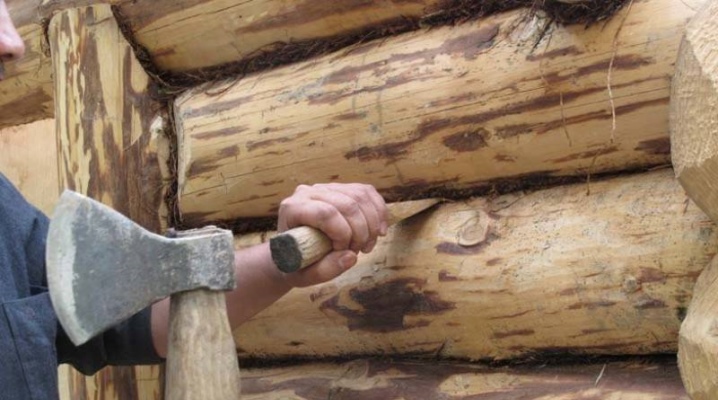
Thermal insulation of a bath is one of the mandatory stages in the process of its construction. Baths made of logs and beams are insulated using caulking - a procedure involving sealing the joints and seams formed between adjacent structural elements with a heat-insulating fibrous material. Let's consider what the features of this procedure are, what materials are used, how the bath is caulked in stages.
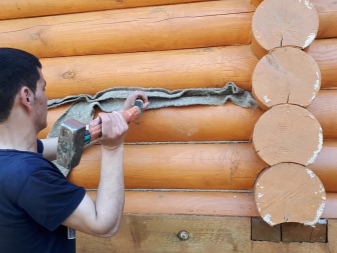
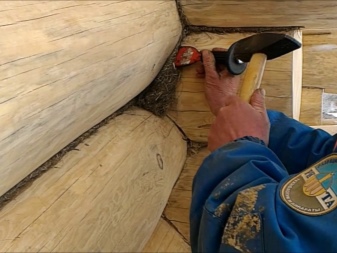
Peculiarities
Bath caulking is a procedure carried out in order to minimize heat loss during the further operation of the structure. In the process of caulking, cracks, joints and gaps between logs are filled with heat-insulating material (inter-crown insulation). As a result:
- the amount of heat loss during the operation of the bath is reduced;
- the time for kindling and warming up the premises is reduced;
- the consumption of fuel and electricity is reduced.
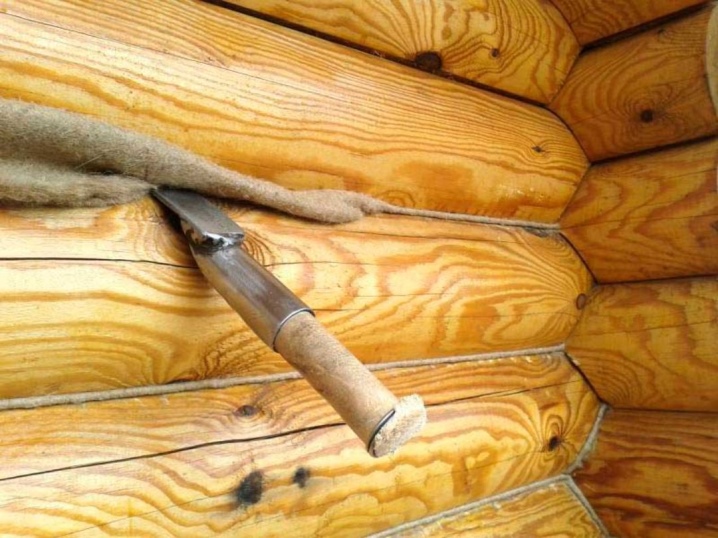
A lawn-filled bathhouse is suitable for use not only in summer, but also in winter. Condensation does not form inside its premises, which means that moisture does not accumulate at the joints of the building elements, causing wood to rot.
Caulking is a procedure that is carried out repeatedly during the construction of a bath. This is due to the fact that the construction process of the structure is accompanied by natural drying of the logs and the gradual shrinkage of the log house, as a result of which new cracks can form in different parts of the bath.
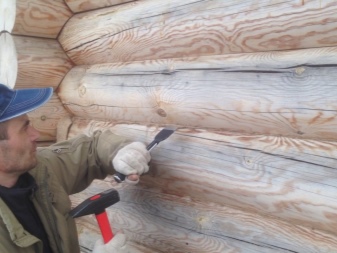
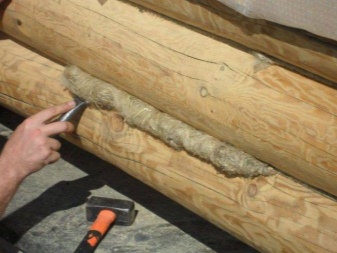
This procedure is carried out in two ways - in stretching and in a set. In the first case, the insulation is laid in the slots with fibers across, leaving the outside edge of the material 4-5 centimeters wide. Then this edge is rolled up with a roller, which is tucked into the slots with a chisel.
In the second case, the fibers of the insulation are twisted into tight bundles, which, with the help of a chisel, are pushed into the cracks between the logs.
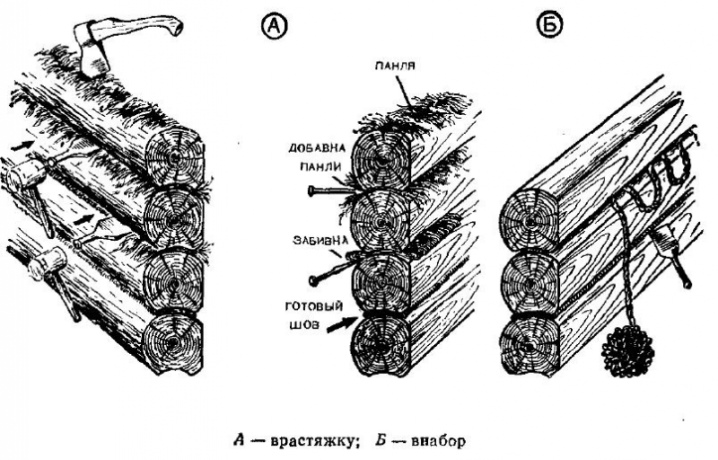
Timing
The first caulking is recommended about a year after the assembly of the log house. During this time, the logs will undergo natural shrinkage, and their moisture content will become relatively stable. Caulking a log house at an earlier date, according to some experts, may threaten the formation of fistulas and other defects in the structure of the wood.
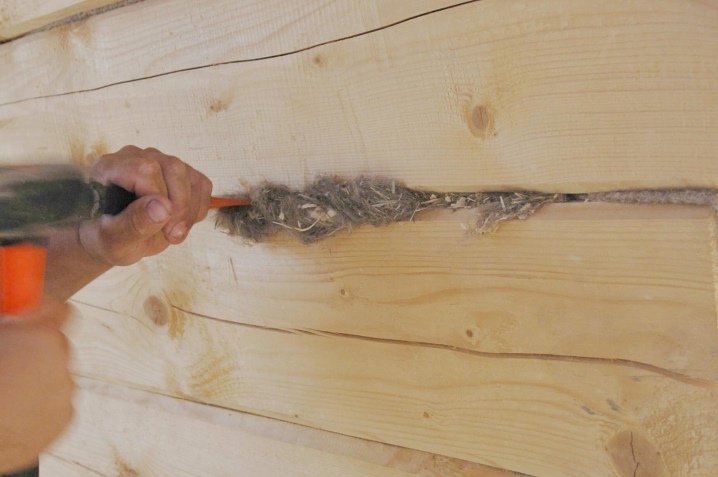
At the same time, many owners of household plots for the first time carry out caulking of cracks even at the stage of assembling a log house with their own hands. This approach is allowed, provided that the frame is assembled from well-dried and carefully processed logs.
If the first caulking is successful, the procedure is repeated after 3-5 years. At this stage, all voids and cracks formed during the operation of the bath are eliminated. It is recommended to caulk the log house for the third time in 10-15 years.

Material selection
A wide range of materials of both natural and artificial origin are used for bath insulation. It is noteworthy that to this day, when building baths and outbuildings, many owners of household plots use materials that were used for insulation several centuries ago.
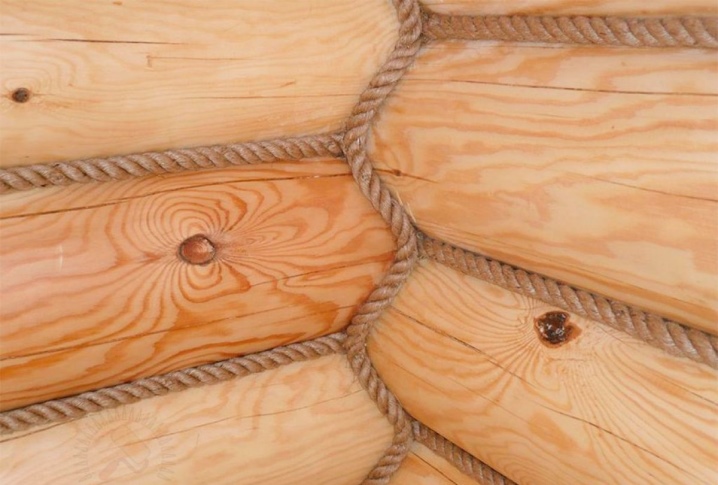
When choosing a material for caulking a log house, you should pay attention first of all to the types of insulation that have such properties as:
- environmental friendliness;
- chemical and radiation inertness;
- resistance to moisture;
- resistance to high temperatures;
- resistance to sudden temperature changes;
- resistance to mold and decay;
- biostability (resistance to damage by insect pests);
- durability (service life).
Mezhventsovy insulation must provide reliable protection of the building from blowing. The insulation will meet this requirement only if it has sufficient density and elasticity (pliability).
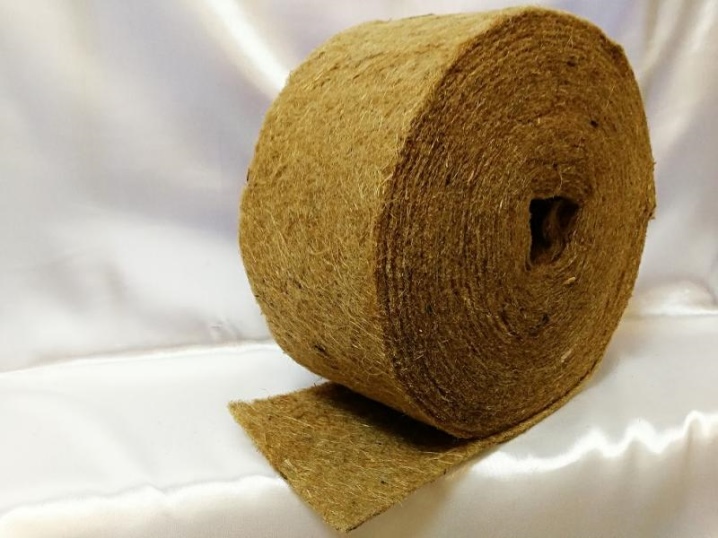
In addition, one of the important qualities of mezhventsovy heaters is their ability to absorb and release moisture when the humidity level changes both outside and inside the premises. This means that the insulation must absorb excess moisture in the event of an increase in air humidity and give it back in the event of a decrease. If the material absorbs and accumulates excess moisture, then over time this will lead to the appearance of a musty smell in the bath, and later - to decay and destruction of the logs.
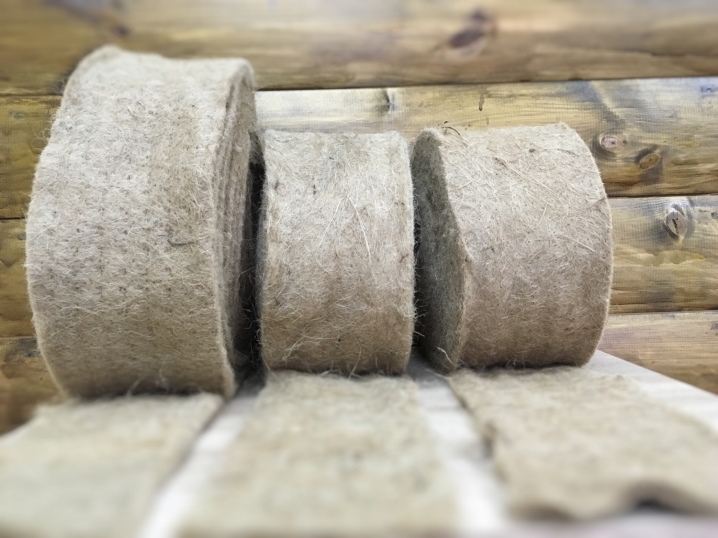
Step-by-step instruction
Caulking is a laborious, but relatively simple process, which, in the absence of proper experience, should be started only after a detailed study of the theoretical part. Incorrectly placed material in cracks and voids will not be able to protect the bath from heat loss and blowing. Besides, with the wrong laying, many types of insulation (moss, tow) are quickly taken away by birds.

The following tools are required to caulk a log house:
- typesetting caulk - a tool in the form of a spatula with a flat, straight and non-sharp blade with a slightly tapered apex;
- curve caulking - a tool with an arcuate blade used to insulate gaps in the corners and hard-to-reach places of the log house;
- split caulk - a tool with a narrow flat blade designed to expand hard-to-reach places;
- mallet.


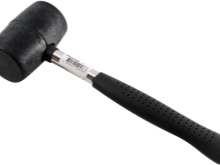
Instead of caulking, more popular working tools are often used - chisels and spatulas. However, experts do not recommend using tools with metal work surfaces (blades or blades), as they can easily damage the material to be laid. Tools with wooden work surfaces are ideal for work.
It should be noted that the caulking of the log house should be carried out sequentially, strictly along the perimeter of each crown to be processed, from the bottom up. Chaotic warming of the crowns (without observing the sequence) threatens with distortion and deformation of the frame. Thus, work on caulking a log house should start from the lowest crown, gradually moving on to all subsequent ones (located above).
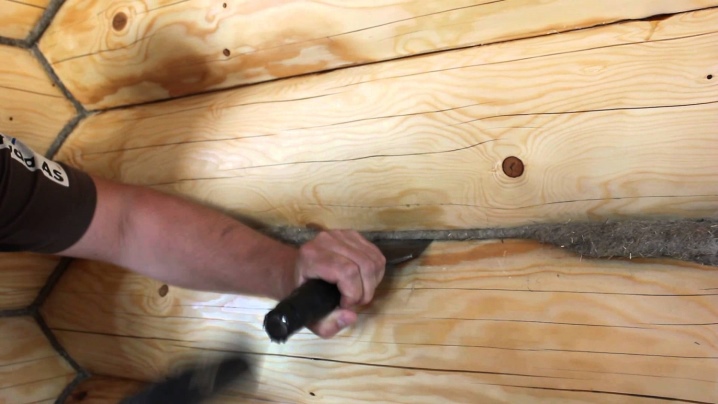
Moss
This natural plant and environmentally friendly material can be confidently considered one of the very first insulation materials. In Russia, forest red-fiber moss, sphagnum and cuckoo flax were traditionally used for insulation. Mosses are excellent for insulating log cabins due to their environmental friendliness, ability to absorb moisture and give it back. In addition, they have bactericidal properties that protect the tree from rotting caused by pathogenic microorganisms.
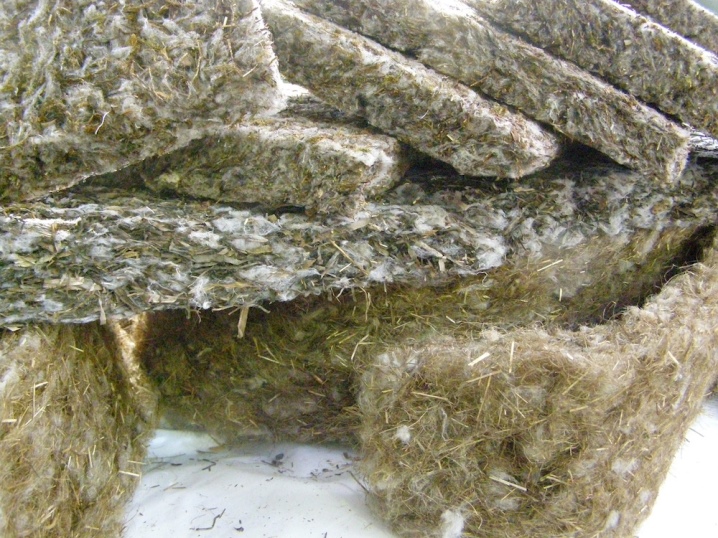
Do not put dry moss in cracks. Therefore, before laying it, you need to soak it for a short while in a bucket of water, in which you should first dissolve 0.5 liters of sunflower oil and a bar of laundry soap. After soaking, the moss is squeezed well - so that it becomes slightly damp, but not wet.

Then the moss is rolled into a dense roller, after which, using a mallet and caulk, lay it in the cracks. The moss should be laid as tightly as possible. Lay the moss so that there is a margin of 4-5 centimeters outside.
Caulking with moss is considered one of the most economical ways to insulate a log house. Even if this plant material cannot be collected on its own in the nearby forest, it can always be found in specialized stores.
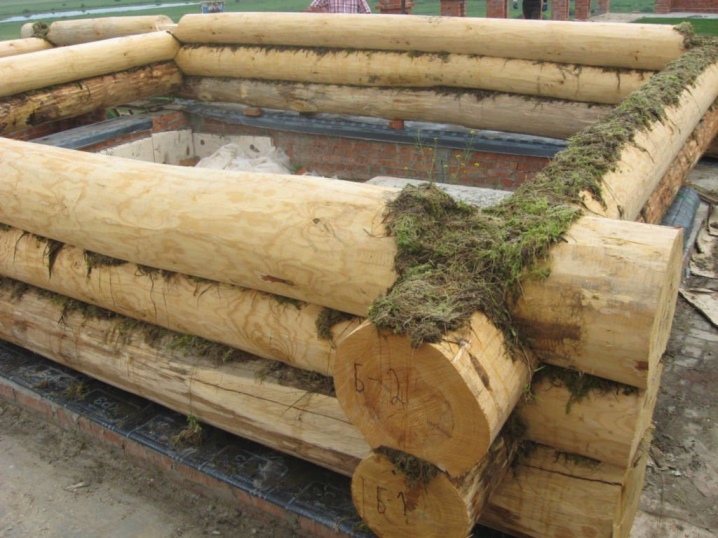
Tow
This material is a coarse matted fiber from flax or hemp. Like moss, tow is an environmentally friendly plant material with good thermal insulation and bactericidal properties.
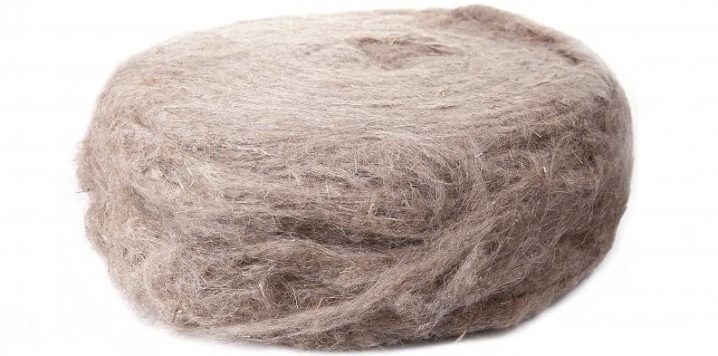
To properly seal the cracks in the log house with tow, you must:
- soak the material in a bucket of water with a small amount of formalin added (to disinfect the fibers);
- after half an hour, remove the material, squeeze it well;
- twist the moistened tow with a tourniquet;
- press the tourniquet tightly to the gap and tuck it inward with caulking and mallet.

Just as in the previous case, a 4-5 centimeters supply of tow should be left outside the gap.
Jute
It is a natural plant fiber used to make sacks, cables and ropes. With the help of jute, you can make the bath windproof, warm, suitable for use in the cold season. Jute is a soft, pliable, moisture resistant material that is resistant to decay and retains heat well. Experts say that in terms of thermal conductivity, jute fiber is not inferior to foam. It is noteworthy that in modern construction, jute is used for insulating not only log residential and non-residential buildings, but also structures erected from a bar-carriage, profiled and edged beams.

Before caulking a log, it is recommended to soak a jute fiber that is too dry for a short time in clean water. This will soften the material and make it more pliable. After that, the jute fiber is twisted into tight bundles of small diameter and filled with them the gaps between the logs, carefully pushing them deep into the caulk. If necessary, on the butt-end of the handle, the caulk is lightly tapped with a mallet to compact the layers of the material being laid.

Jute laying, as in previous cases, should be done without the use of sharp tools. If the insulation is done with jute cloth (not fiber!), Which is pushed in strips into the gap, remember to be careful. It is impossible to damage the canvas or punch through it. Punctures, damage and other defects inevitably lead to a decrease in the thermal insulation characteristics of the material.
Synthetic sealant
Some modern sealants are able to reliably protect the bath not only from heat loss, but also from blowing, and from the penetration of moisture from the external environment. They are easy to apply and quickly harden, forming a dense moisture-proof layer. It is noteworthy that an ordinary tablespoon can be used to apply sealants.
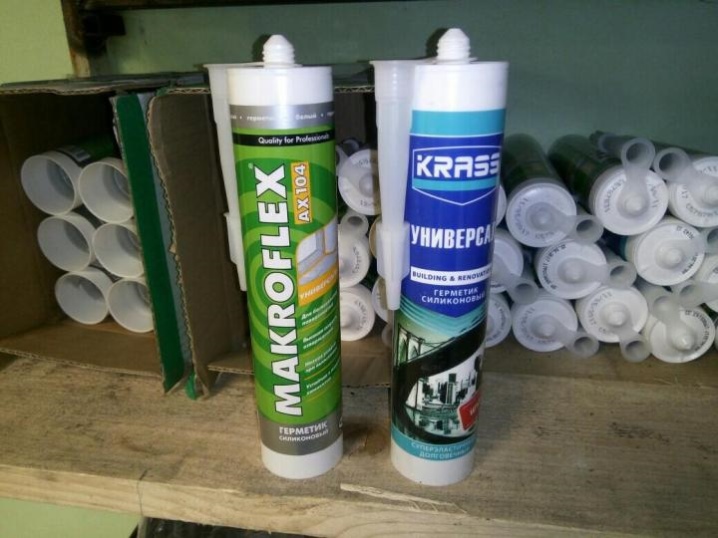
At the same time, experts note that some sealants used for caulking a log house are vulnerable to ultraviolet radiation. This means that over time, under the influence of sunlight, the layers of the sealant begin to gradually break down. To prevent this, special strips made of wood or plastic are placed on top of the layers of sealant and fixed.
The application instructions for each sealant are individual, therefore, you must familiarize yourself with it in advance before using the product. In most cases, caulking a bathhouse with a sealant involves performing the following actions:
- wait for the log to dry completely and shrink;
- lay a sealing cord between the crowns, drown it in the cracks with a caulking knife (spatula or chisel);
- lightly spray the sealing cord and adjacent surfaces with water;
- wait for the cord to dry and apply the sealant using a brush, tablespoon or special assembly gun.
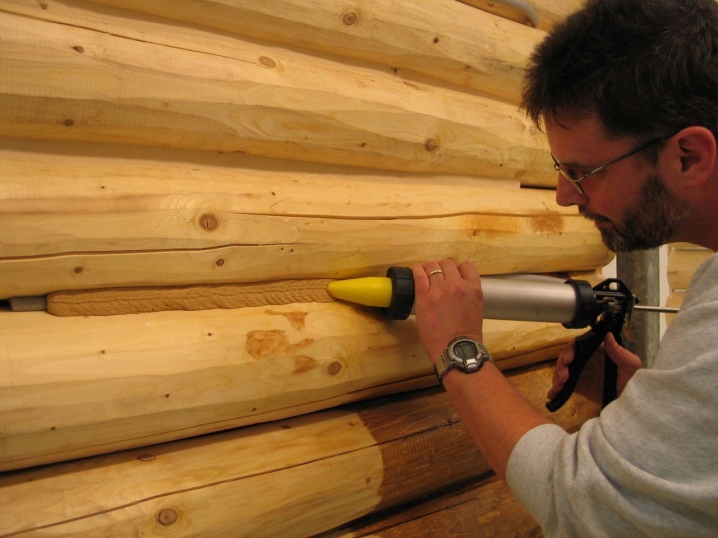
It should be noted that this caulking method is not considered the most reliable. According to experts, the best protection of the bath is able to provide combined methodcombining the use of both natural (tow, moss, jute) and synthetic (sealants).
In its most general form, a step-by-step instruction for caulking a log-house of a log or bar in a combined way implies the following actions:
- after two caulking with jute, moss or tow, the final shrinkage of the log house is expected;
- if necessary, caulk new cracks and voids formed during the shrinkage process;
- carry out the laying of the sealing cord, laying it between the logs and grooves of the structure along its entire perimeter;
- carry out the application of the sealant over the sealing cord.
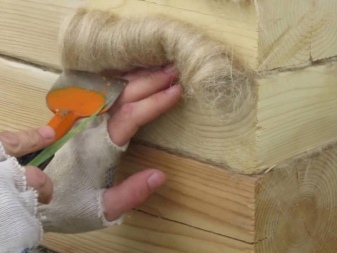
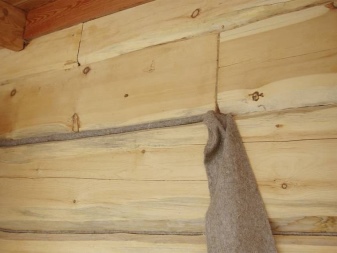
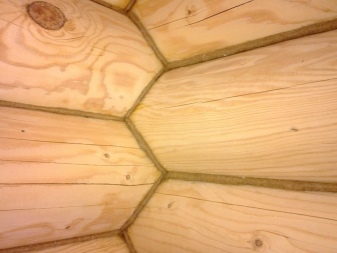
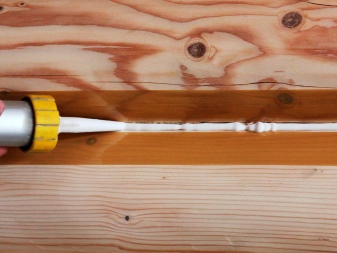
This method of warming the bath will provide maximum protection of the building from blowing and heat loss. At the same time, it is considered the most time consuming, requiring a significant investment of time and effort.
For more details on how to properly caulk a bath, see the next video.




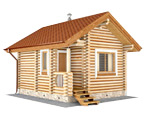
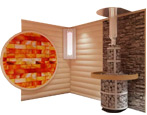

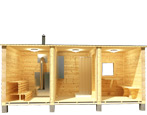

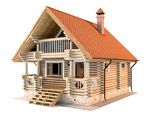


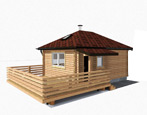
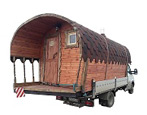


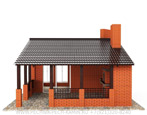

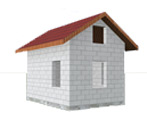

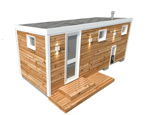
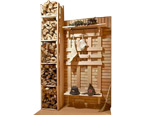


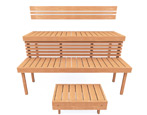


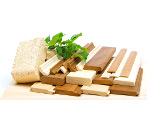


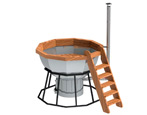
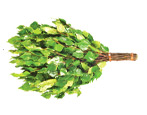
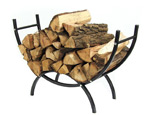
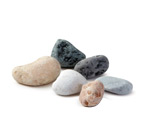
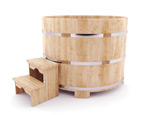
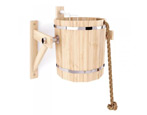
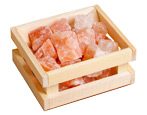




























































The comment was sent successfully.